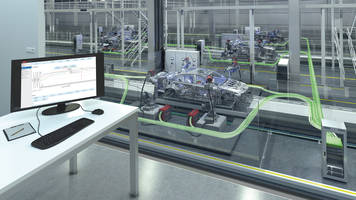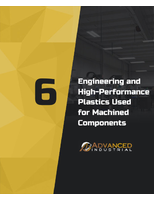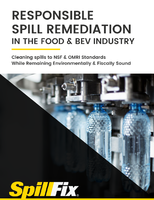Pioneers in Digitization and Interconnectivity

Fronius offers innovative welding technology solutions in the age of Industry 4.
Industry 4.0 is revolutionizing production processes – and welding technology is no exception. New functions and capabilities are in demand for the optimum integration of welding systems into the interconnected and computer-controlled factories of the future. For Fronius, the “fourth industrial revolution” has already been a reality for many years: as long ago as 1997, the company developed the world’s first digital power source and has been the technology leader ever since when it comes to digitization and inter connectivity in welding technology. Fronius offers a wide range of systems that allow users to work quickly, intuitively and flexibly.
Industry 4.0 is making production processes faster, more transparent and more reliable from the ground up, allowing even small batch sizes to be manufactured cost-effectively and to a consistently high quality standard. The term itself describes wide scale digitization and inter connectivity: people, computers, machines, production plants, components, raw goods and finished products around the world are connected to one another and can communicate. This is made possible by increasingly powerful processors, sensors and control systems with which these complex systems can be reliably mastered. All the relevant product and process data must exist in digital form and be made available to all the stations involved. Welding technology plays an important role as an essential component of many value-added chains.
As a result, power source manufacturers are changing their focus: while the conversion of electricity had for decades been the key to success, it is now the digitization of the welding process. In the future, communication, real-time data control, data storage, cyber security and intelligent man-machine interfaces will be the driving forces of R&D. For example, software tools that optimize welding parameters or manage wearing parts will play a more dominant role. Hardware will no longer be as relevant; however, fault-free functioning will remain an essential prerequisite.
For Fronius, the digital transformation is a fixed component of the corporate strategy. Twenty years ago, the technology leader launched the first fully digitized power source – the TransPuls Synergic (TPS) – and just a few years later began developing the next generation. The TPS/i was introduced in 2013 and has a high-performance processor and a high-speed bus, meaning that greater amounts of data can be transferred even more quickly – a vital condition of Industry 4.0. New developments from Fronius Perfect Welding also have a focus on inter connectivity and digitization, which means users benefit from faster, more flexible and much more cost-efficient production.
WeldCube: analyzing welding data and improving processes
Data processing and analysis is on the march in the world of welding technology. Modern welding systems collect information about the current, voltage, wire speed, welding speed and time, as well as arc and dynamic correction or job numbers. With the aid of this data, processes can be optimized and errors can be avoided. Users are also able to seamlessly integrate welding systems into a networked and automated production environment. This is why Fronius has developed the WeldCube, the documentation and data analysis system. The WeldCube manages the most important welding information and enables it to be displayed in a clear format. From 2018, the system will also be available as an ‘on premises’ version; in other words, purely as a software solution.
WeldCube offers a wealth of functions that make it a truly versatile software tool. The actual values for each power source can be documented per weld seam both globally at component level, and locally in relation to a specific machine. These values can be continuously monitored and analysed. Set values such as job data can likewise be monitored and are recorded by the system throughout the entire service life of the welding system. In combination with the new Fronius welding system platform TPS/i, it is also possible to create, edit and compare jobs centrally. All such data can be exported in a variety of different file formats or printed out directly. Intelligent statistics and filter functions allow one-off analyses to be performed. These are based purely on the user's individual requirements and can then be integrated on a customized dashboard. In each network, a WeldCube system allows up to 50 power sources to be combined; the results can be retrieved using a computer, tablet or smartphone. In this way WeldCube contributes to a high-quality production process, helps to sustainable improve processes and measurably reduces costs.
Virtual Welducation: the easy way to gain experience in the world of welding
To make material-intensive and cost-intensive welding training easier and more attractive, Virtual Welducation from Fronius offers solutions that enable users to delve into the world of welding in a virtual environment. At the heart of this approach is the Virtual Welding simulation platform, which allows users to practice manual and robot-assisted welding processes under virtual yet realistic conditions, without any risk of injury or need for expensive consumables. The user places a plastic work-piece on a PC terminal with a screen and a shelf and draws a virtual weld seam using a welding torch – the design and function of which is almost identical to the real thing. The seam is reproduced as a graphic on the screen. 3D glasses give users a realistic view of their work. An optional welding helmet with integrated 3D glasses can be ordered for the Virtual Welding simulator.
The touchscreen display is simple and intuitive to use. While performing the exercises, the welding trainees are assisted by a “Ghost”, in other words, a virtual instructor that provides valuable hints and tips. The results are objectively assessed according to a points system, creating transparency and boosting motivation. Trainees can also record their personal know-how and their skills digitally and save them in the system. This means exercises can be targeted to the trainee’s level of knowledge. Virtual Welding has already become an established product in vocational colleges, training centers in trade and industry, technical colleges and welding institutes and associations.
Fronius has developed the Virtual Welducation Basic App to support virtual training. It provides useful facts on all aspects of welding on a smartphone or tablet and turns product information interactive. The program combines a fun approach to the material using a gaming and quiz application with an augmented reality application (MagicFolder) for virtual welding. MagicFolder is child’s play to use and works in combination with the new Virtual Welding brochure: a coded mark in the form of a graphic is printed on every page. If the reader wants to access any additional information they simply have to capture these coded marks using the camera on their smartphone or tablet for the app to then provide them with videos on Virtual Welding, 3D simulations of welding processes and explanations of the most important merits of virtual welder training. With the help of the quiz application, the user can gain a solid basic understanding of welding in a fun way. The game imparts initial experience of welding itself. A points system and a number of different levels serve to increase the user’s motivation. The Virtual Welducation Basic app is available free of charge for Android and iOS.
WeldConnect: the app for tracking down a solution
The Fronius app WeldConnect helps users to determine the appropriate welding parameters for their particular manual welding application. The user simply enters the power source being used and the welding process, material thickness, welding speed and weld-seam geometry as well as the base material, filler metal and shielding gas. Data can be entered either manually or by scanning the QR codes on the materials using a smartphone. WeldConnect uses this data to quickly and accurately calculate the deposition rate and the energy input, and suggests the appropriate welding solution; there is no longer any need to access the power source or fathom out the correct parameters. The results can be stored, transferred wirelessly to the TPS/i power source in the form of a job or shared with friends and colleagues by e-mail. Users benefit from the app being so simple to use and from being guided through the sequence of operations, thus being able to configure suitable welding solutions incredibly quickly. WeldConnect is available free of charge in English for Android and iOS devices.




